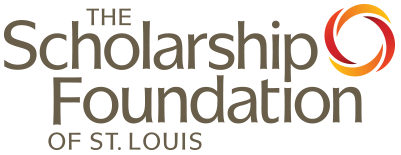
Each student planning to go to college needs to do the math (unless they have access to unlimited wealth and no worries about paying their own bills). THIS year, right now, the math is changing daily.
In order to decide the potential costs of a semester starting in just a few weeks, students must be able to answer these questions:
- Do you have all the funds you need to cover your educational and living costs, without having to depend on income from work?
- Will your school refund room and board costs if the campus closes?
- If you are planning to live on campus, do you have a back-up plan if campus suddenly closes? How will you cover moving, transportation, and housing costs?
- Have you confirmed your aid award (including any scholarships associated with athletics or extracurricular activities) in the last 7 days?
Over the past three months, The Scholarship Foundation has tracked information on the 120 colleges attended by our students. The Foundation is committed to supporting students and their decisions, and that requires having necessary information. Here, for public use, is our 2020-21 Colleges-Key Factors and Announcements. Find your school and check what we’ve documented to be sure you’re aware (and let us know at info@sfstl.org if you find errors or can fill in missing information!).
We are constantly updating the information as best we can, but the spreadsheet is a resource to confirm for yourself, column by column, the math you face. For each school on the spreadsheet, you will find the name and the number of students The Scholarship Foundation of St. Louis supported at that school in 2019. For each school, reading from left to right on the spreadsheet:
- Cost of attendance (COA) is the total amount a student must expect to cover. Cost of attendance includes directs cost paid to the school such as tuition and fees, as well as room and board. It also includes indirect costs, such as transportation, books, and supplies, as well as personal expenses. Figures entered on the spreadsheet in the first column indicate cost of attendance for a full-time, residential undergraduate student.
- Tuition and fees. Despite the pandemic, many colleges have either increased tuition and fees for the 2020-21 school year or have not discounted the cost even if classes are offered primarily or exclusively online. Some have not published rates for the coming year. This column (the rate you will pay your school) is important to confirm, especially for students who will live off-campus with living expenses different than on campus.
- Financial aid awards have been issued, altered, and/or delayed this year. Some students are still waiting, especially those in verification. (Did you know the IRS is not mailing key paperwork some families need for verification?) Here is where uncertainty and risk are greatest:
- If a student has an athletic scholarship, but is unable to play this year, will the school still honor that scholarship?
- If a student has a housing scholarship and on campus housing closes, how will they cover living expenses?
- If a student depends upon work study to cover expenses, but jobs do not exist this fall, how will they manage?
- Reopening plans for fall semester are also noted and linked on the spreadsheet; the cost of attendance for a student is impacted by the school’s decision to physically reopen or not. Often these plans address the health and safety protocols the campus plans to take. Please see: Need to Know Re: COVID-19.
- Financial solvency spans two columns and includes scores entered from metrics published BEFORE THE PANDEMIC by Forbes and U.S. Department of Education. The longer a student attends a school the greater the loss (of credits and money) to that student if the school closes. Students also have a right to understand the financial solvency of their institution; you can read more here: BUYER BEWARE: Colleges’ Fragile Finances. Both sources for these metrics use a 4.0 point scale and any school rated under 2.0 is considered at risk.
The Scholarship Foundation of St. Louis has used the information on the spreadsheet to make and verify awards to students, and to improve accountability and transparency of our work and the work of the colleges. We’ve also added links to relevant news released by or about your school. Please contact our office at info@sfstl.org or 314-725-7990 if you would like assistance in reviewing the information or have additional information to share.
Finally, not included on the linked spreadsheet but a critical component of the math is the Expected Family Contribution, or EFC, which is the output of the Free Application for Federal Student Aid (FAFSA). Although not what a family is required to pay, it is an indicator of a family’s ability to contribute and most need-based aid is determined based on this number. Many families have seen significant income losses since mid-March and their EFC (generally derived from 2018 tax figures) may not accurately reflect current financial circumstances. Students and families in this position should contact their college about a professional judgment review or special circumstances appeal.
Now that you have the references and questions, here is the basic formula The Scholarship Foundation uses to determine eligibility for award:
COST OF ATTENDANCE (COA)
Minus (-)
EXPECTED FAMILY CONTRIBUTION (EFC)
Minus (-)
GRANT AID
(funds to be awarded from federal, state, school, and private sources that do not have to be repaid)
Equals (=)
REMAINING UNMET NEED
The Scholarship Foundation only makes an award (interest-free loans, grants) if it is sufficient to fill the remaining unmet need. The Scholarship Foundation does not make awards to any student whose math does not add up and who will be attending college with remaining unmet need even with our award.
Have you done the math? Now is the time; we can help.
MORE RESOURCES
FOR STUDENTS
If you are new to The Scholarship Foundation and would like to be connected with a Foundation Advisor, please complete this brief intake form and we will be in touch with you. Current Scholarship Foundation students can contact the Foundation or call or email their Advisor directly.


